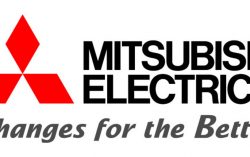DUBLIN--(BUSINESS WIRE)--The "Philippines Micromobility Markets 2021-2030 By Type, Model, Sharing System" report has been added to ResearchAndMarkets.com's offering.
The Philippines micromobility market value stood at $1.9 million in 2020, and it is predicted to surge to $13,899.7 million by 2030, exhibiting a CAGR of 158.6% from 2021 to 2030.
The COVID-19 pandemic has positively impacted the Philippines micromobility market. Owing to the pandemic, people are preferring micromobility over conventional shared mobility, as it will allow them to maintain social distancing.
For example, when the stay-at-home orders were lifted in Manila, a large number of people began cycling or walking to work, instead of using public transportation services, such as buses.
The e-mopeds category contributed the highest revenue to the Philippines micromobility market in the past, under the vehicle type segment. This category will also exhibit the fastest growth in the coming years owing to the economical nature of e-moped sharing services.
The dockless category dominated the Philippines micromobility market during the last few years, and it is predicted to demonstrate the faster growth in the forthcoming years as well, within the sharing system segment. The dockless sharing system is being increasingly adopted by market players on account of the rising preference of customers for it over the docked system. This is because the vehicles deployed via such systems can be picked up and dropped off anywhere.
The first- and last-mile category held the larger share in the Philippines micromobility market during the past few years, under the model segment. This was mainly because of the vast unmet demand for a cost-effective and efficient means of transport for first- and last-mile commute.
The market is being driven by:
- Rising Demand for Mitigating Pollution: With the extensive use of fossil-fuel-powered automobiles, air pollution levels are rising at an alarming pace in the Philippines, which is subsequently causing a sharp rise in the prevalence of various lung diseases. As micromobility reduces the requirement for personal vehicle ownership, its increasing adoption is expected to reduce the number of vehicles on the country's roads, thereby mitigating air pollution.
- Falling Prices of Electric Vehicle Batteries: With the declining prices of the batteries used in electric vehicles, the latter's adoption is surging in the country. Moreover, this is encouraging many Philippines micromobility market players to adopt electric vehicles. Additionally, several market players are incorporating new-age lithium-ion batteries on account of their greater eco-friendliness, increased running economy, and reduced charging time.
Key Findings of Philippines Micromobility Market Report
- Soaring demand for greener environments is the biggest market driver
- Micromobility providing better first- and last-mile connectivity
- Popularity of e-mopeds was highest in past
- Adoption of dockless sharing systems will surge
- Micromobility service providers adopting electric vehicles
- Market players focusing on service expansion
The most-significant players operating in the Philippines micromobility market are
- Grab Holdings Inc.
- Giant Manufacturing Co. Ltd.
- Moovr PH
- Ningbo Kaabo Technology Co. Ltd.
- Merida & Centurion Germany GmbH
- StreetWheels Philippines
- Niu Technologies
- Ningbo MYWAY Intelligent Technology Co. Ltd.
- Kwang Yang Motor Co. Ltd.
- Segway Inc.
- Vmoto Limited
Key Topics Covered:
Chapter 1. Research Scope
Chapter 2. Research Methodology
Chapter 3. Executive Summary
Chapter 4. Voice of Industry Experts/KOLs
Chapter 5. Market Indicators
5.1 Total Population
5.2 Passenger Car - Vehicle in Use
Chapter 6. Definition of Market Segments
6.1 By Vehicle Type
6.1.1 E-Scooters
6.1.2 E-Bikes
6.1.3 E-Mopeds
6.1.4 E-Pods
6.1.5 Bikes
6.1.6 Scooters
6.2 By Model
6.2.1 First- and last-mile
6.2.2 Multimodal
6.3 By Sharing System
6.3.1 Station-based
6.3.2 Dockless
Chapter 7. Industry Outlook
7.1 Market Dynamics
7.1.1 Trends
7.1.1.1 Adoption of battery swapping technology for charging micromobility fleets
7.1.2 Drivers
7.1.2.1 Focus on reducing air pollution and transportation cost
7.1.2.2 Growing need for efficient first- and last-mile connectivity
7.1.2.3 Declining battery prices
7.1.2.4 Impact analysis of drivers on market forecast
7.1.3 Restraints
7.1.3.1 Improper infrastructure for deployment of micromobility vehicles
7.1.3.2 Impact analysis of restraints on market forecast
7.1.4 Opportunities
7.1.4.1 Future of micromobility: 5G and autonomous technology
7.2 Impact of COVID-19
7.3 Policy and Regulatory Landscape
Chapter 8. Philippines Market Size and Forecast
8.1 Market Size and Forecast
8.1.1 By Vehicle Type
8.1.2 By Model
8.1.3 By Sharing System
8.2 Micromobility TAM
8.2.1 By Vehicle Type
8.2.2 By Model
8.2.3 By Sharing System
Chapter 9. Key Recommendations
9.1 Key Recommendations for Micromobility Service Providers
Chapter 10. Competitive Landscape
10.1 List of Market Players and Their Offerings
10.2 Key Micromobility Players and Funding Status
10.3 Major Manufacturers and Their Product Offerings
10.4 Recent Strategic Developments
10.4.1 Expansions
10.4.2 Investment and Funding
Chapter 11. Company Profiles
11.1 Business Overview
11.2 Product and Service Offerings
For more information about this report visit https://www.researchandmarkets.com/r/ymrwb3
Contacts
ResearchAndMarkets.com
Laura Wood, Senior Press Manager
press@researchandmarkets.com
For E.S.T Office Hours Call 1-917-300-0470
For U.S./CAN Toll Free Call 1-800-526-8630
For GMT Office Hours Call +353-1-416-8900











